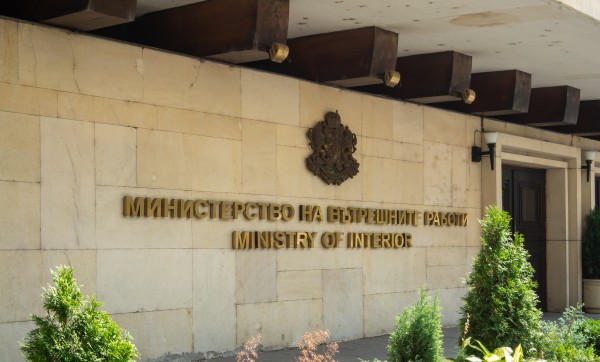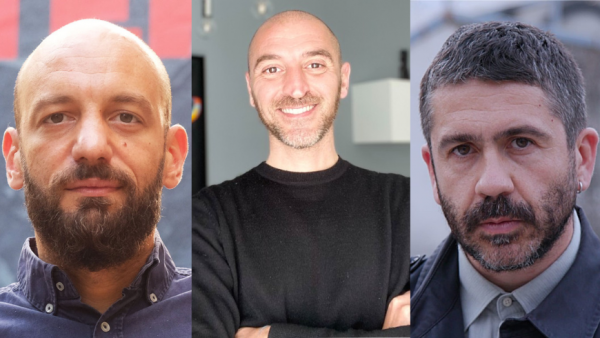Social media has turned into a double-edged sword for newsrooms: It is an irreplaceable resource of news content and audience engagement but it can also expose journalists to online abuse that impacts their ability to work and causes severe distress. To fight the negative effects stemming from social media, newsrooms in the United Kingdom have sought to develop step-by-step in-house guidelines for dealing with online abuse while simultaneously seeking better coordination with social media companies.
“In this age that we are living in, anyone can contact an individual journalist who happens to have a Twitter account or a Facebook profile and tell them what they think, both of the story and of the person”, Mark Frankel, social media editor at BBC, said in an interview with the International Press Institute at the BBC’s London offices. “This can be a huge issue for us, because it means that the journalist becomes as much of a target as the story.”
The issue of online harassment was central to discussions IPI held with several top UK media organizations, including the BBC, The Guardian, Reach PLC, The Telegraph and The Times, during a visit to London in September as part of IPI’s Ontheline project and the OSCE Representative on Freedom of the Media’s Safety of Female Journalists Online (SOFJO) initiative.
Editors and journalists whom IPI interviewed expressed disappointment overall with the assistance provided by social media platforms to tackle harassment of journalists.
“It is very hard to get messages taken down even when they cause severe distress to the journalist”, Karyn Fleeting, head of audience engagement at Trinity Mirror Regionals, said. “We flag the messages, but it is often seen as a pointless exercise.”
Journalists said they were mostly asked to report abusive messages via the standard channels available on social media websites.
Ann Gripper, executive editor of Mirror Online, stressed the need for more effective ways for newsrooms to contact the social media platforms in harassment cases.
“There should be more help to close it (harassment) down, like an emergency hotline for the most serious cases”, she proposed.
Some editors suggested that even a possibility to better track their reports of abusive comments would be useful.
Many editors also said they would welcome the possibility on Facebook to turn comment off for certain stories, as can be done on a media outlet’s own comments page. The limited practical ways of dealing with discussions that take place under Facebook posts are further complicated by legal concerns, editors note.
Journalists also said that social media platforms’ reporting tools fail to take into account other means of harassment than outright physical threats and abuse. Frankel pointed out that constant undermining of a journalist’s skills and professionalism that appears aimed at discrediting him or her rather than expressing criticism can also be damaging to the target’s well-being.
Platforms taking on online harassment with tech, guidelines
Facebook and Twitter have been under growing pressure to better respond to online harassment campaigns against journalists and others on their platforms in recent year. To address these issues, Facebook and Twitter have pledged to enhance safety and promote “healthy conversations” by stepping up investments in safety staff and in artificial intelligence and other technology to make finding and removing unwanted content from their platforms easier.
Some of this work has had a special focus on the safety of journalists. Last year, Facebook launched a safety guide for journalists in cooperation with journalist and press freedom groups. The guide explains, for instance, how to block abusive comments, report users and manage privacy settings. Recently, Facebook started to offer more protection for public figures – which Facebook defines as “people who are featured in the news or have a large public audience based on their profession or chosen activities” – who are attacked on its platform.
“For example, severe attacks that directly engage a public figure, by tagging them or attacking them on their profiles or pages, will now no longer be allowed under our new policy”, Facebook Global Safety Policy Manager Julie de Bailliencourt said in response to questions from IPI regarding its policy toward online harassment.
De Bailliencourt also said that Facebook had established “feedback channels” for journalists to respond to accounts that may have been hacked, to impersonation and to other safety concerns. To educate journalists on online safety, the social media giant has organized training sessions and workshops for journalists.
A Twitter spokesperson told IPI that the company had introduced 30 product, policy and operational changes to improve the safety of the platform over the past two years. While not focusing specifically on the safety of journalists, Twitter has drafted general guidelines for responding to online abuse, modified its tools to report harassment and to better detect abusive behaviour on the platform, and sought to better understand online harassment by partnering with various organizations over the past few years.
“Twitter’s number one priority is improving the health of the public conversation, and safety is a key part of this goal”, the spokesperson said. “We’re not always going to get it right, but we firmly believe that we need to be thoughtful and considered in our approach, balancing freedom of expression with people’s absolute need to feel safe online.”
Leaving social media a last resort
Though Facebook and Twitter have responded to calls to tackle online harassment with various measures – some of which are fairly recent, making it more difficult to measure impact – there is still scepticism about their effectiveness. In this light, media outlets’ own mechanisms to combat online harassment remain important. Most newsrooms that IPI visited in London have established their own set of guidelines for journalists and their managers for reacting in the face of online harassment on social media.
Some media outlets have created simple step-by-step recommendations to follow for distinct types of harassment on social media, ranging from doxing to physical threats. These guidelines start from the basics, such as advising journalists to use two-factor authentication to avoid hacking and to set profiles to private if needed. When receiving abusive messages, journalists are recommended to screenshot them, report them to social media platforms and mute or block the user. Some newsrooms have also organized trainings for journalists on these measures.
In the case of an ongoing attacks, journalists are encouraged to contact their line managers or the newsroom’s social media team if they feel threatened and to give over their social media accounts to someone else to follow. If the threat seems imminent, most media organizations IPI interviewed urge journalists and managers to contact office security directly. A number of media organizations have also put in place social media teams who can be in direct contact with social media platforms to try to take the heat off the attack.
Though the importance of social media platforms for newsrooms is undisputed, Karyn Fleeting said that, as a last resort, journalists affected by online harassment may be advised to go off social media.
“As great as Twitter is for its communication and engagement, other things are more important still – and our journalists’ wellbeing comes first”, Fleeting told IPI.
Some media organizations now explicitly advise managers that audience engagement or social media activity should not be an obligation for journalists. Journalists’ social media accounts are generally linked to their stories only with their permission to avoid unwanted attention on social media.
In IPI’s conversations in London, it was noted that some journalists try to tackle online harassment by engaging with their abuser or sharing abusive comments, a technique commonly known as “naming and shaming” and that aims at deterring digital abusers from continuing their abuse. A majority of newsrooms still advise journalists to avoid these measures out of fear it may attract even more harassment.
“Many of our journalists have tried to explain their stories on social media, and all that they have had on return is a flurry of abuse about how they could not possibly have an objective view, how they look and sound, things that are totally unrelated to their story”, Frankel said.
Taneth Autumn Evans, head of audience development at The Times and The Sunday Times, said that online harassment campaigns targeting journalists have led to a situation in which it has become harder to get journalists to engage on social media.
Frankel shared a similar experience: “Often these things become so abusive that it becomes almost impossible for the journalists to do their stories because the noise of the abuse drowns out the opportunity to reach and engage a wider audience with their journalism.”



